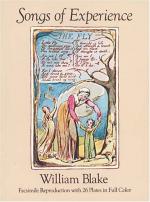|
This section contains 503 words (approx. 2 pages at 300 words per page) |

|
The facsimile, or fax, machine is both a transmitting and receiving device that "reads" text, maps, photographs, fingerprints, and graphics and communicates via telephone line. Since the 1980s, fax machines have undergone rapid development and refinement, and are now indispensable communication aids for news services, businesses, government agencies, and individuals.
The fax was invented by Alexander Bain of Scotland in 1842. His crude device, along with scanning systems invented by Frederick Bakewell in 1848, evolved into several modern versions. In 1869, a Frenchman, Ludovic d'Arlincourt, synchronized transmitters and receivers with tuning forks and thus aided further developments. In 1924, faxes were first used to transmit wire photos from Cleveland to New York, a boon to the newspaper industry. Two years later, RCA inaugurated a trans-Atlantic radio photo service for businesses. Models either required an electrolytic or photo-sensitive paper, which changed color when current passed through it; or thermal paper, a...
|
This section contains 503 words (approx. 2 pages at 300 words per page) |

|


